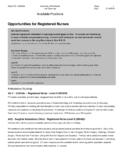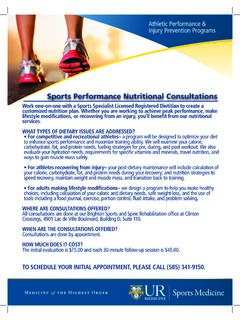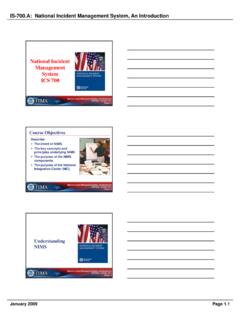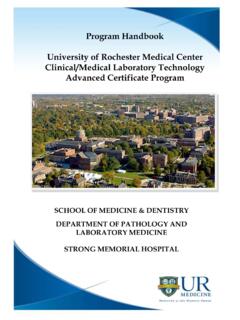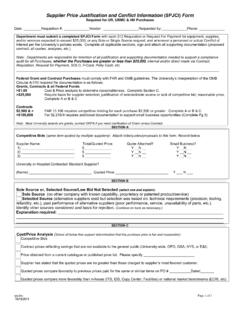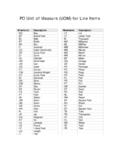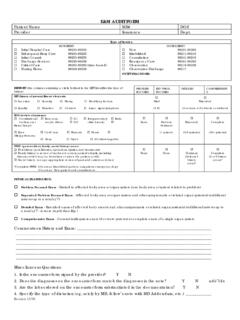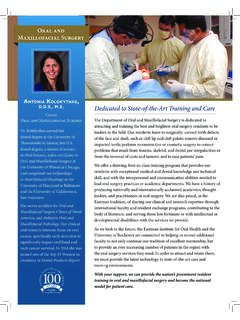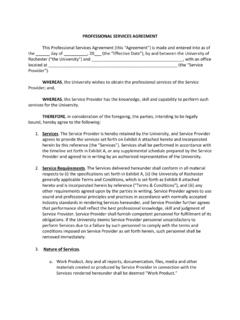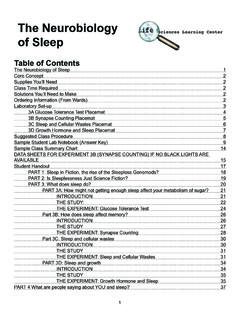Transcription of Legal Implications - University of Rochester
1 Medical- Legal & Ethical Issues in Nursing Alexa Schneider, PhD, PsyD, RN, FNP, LNCC, NY-SAFE Objectives Describe how current and future healthcare trends will impact Legal and ethical issues in nursing, patient care technicians, social workers, and office personal. Describe best practices that protect your license and position, influence quality of care and reduce risk. Examine medical malpractice cases and the impact on the nurse and the various roles in the acute, long term care & outpatient setting. Current and future healthcare trends Role of nurse continues to expand & is influenced by many aspects. Trends Best Practices that protect your license, influence quality of care and reduce risk.
2 School: Learn to obtain license After school: Learn to maintain/protect/keep license Medications Giving meds on time not when convenient for nurse (Heparin, Antibiotics, and etc.) Giving med and scanning med at a later time. Proper wasting of narcotics 5 rights No over riding system unless absolutely necessary. Don t cover up if medication error occurs. DNR Know your patients DNR status Legal order signed by the Doctor View original paperwork Patient confidentiality Never leave paper chart/computer screen in a public place Discuss contents only with persons directly involved in patient s care or those authorized by the patient.
3 They should be listed by name. (Don t assume partners have access to information) Ask for ID prior to providing information Do not discuss pt or pts info in public, places, elevators, cafeteria, or at parties. Don t view patient s information not in your care: family; friends; celebrities and etc. Patient Falls & Restraints Among senior citizens, falls represent the 5th leading cause of death, and the mortality rate from falls increases significantly with age. Cases Failure to follow policy Failure to raise bedrails Criteria for Incident Reports Should be completed for any usual, unexpected, or unanticipated occurrences, and for any event which has or may have an adverse patient outcome.
4 Patient falls Medication error Loss of valuables, belongings Equipment malfunction Property damage Near misses Incident reports Be Objective Do not blame or admit liability What did you do? Do not include names/addresses of witnesses Document time/name of medical provider Do not file in chart Do not write incident report made Proper handoff communication Required to properly handoff your patients to another qualified professional. Tool SBAR: S=Situation: patient name, DOB, & medical provider B=background: date of admission, diagnosis & current condition including test results A=Assessment: summary of recent events/changes in condition or treatment and any anticipated changes in condition or treatment.
5 R=Recommendations: state your nursing recommendations with any new treatment in the plan of care by the medical provider. Abandonment Termination of patient care without assuring the continuation of care at the same or higher level. In various medical venues (office/clinic practice; walking off the job; leaving pt without transferring pt to another nurse; refusing overtime) (6) Sexual Misconduct Controlled Substances Self-prescribing controlled medication for one s own use or for family members. Diversion Social Media Facebook Twitter Texts E-mails Info about & from patients Telephone calls Office scenario Date and time of call Advice you gave Who you spoke with and if other caregivers notified Hospital scenario Date and time of call Provider name Client s chief complaint Information you provided Orders received/not received Nurses who disagree with a provider s order should not carry out an obviously erroneous error.
6 Pitfalls for Staff Red Flag Complaints Documentation Documentation Written evidence of interaction between and among health professionals, patients, and their families; the administration of procedures, treatments, and diagnostic tests; the patient s response to them and education of the family support unit. Major purpose of medical record is to document the care given to the patient. Nurse Practice Act states the general duty is to record pertinent information including the response to interventions . Also a Legal document. Courts have issued a warning to nurses & medical personnel that the availability of accurate medical records is NOT a technicality but IS a Legal requirement.
7 Chart is a persuasive witness because it s a description of the facts at the time. Should be no unanswered questions to the patients chart that the plaintiff attorneys can use to construct their version of what happened. Documentation reflects: character, competency, and the care delivered by the nurse Documentation Do s Nursing procedures (procedure name; when performed; who performed; how performed; client tolerated; adverse reactions) Phone calls Health care team visits Don t wait to chart Client refusals Client s subjective data Medication omission Late entry Not applicable Required to document Sudden decline in patient s condition, actions.
8 Outcome Patient injuries/medication errors Equipment failure/incorrect use Failure of provider to respond The red flag patient or family Client/family education/instructions Documentation Don ts Complaints Opinions Altering the record Chart ahead Staffing problems Staff conflicts Leave empty lines/spaces Make reference to incident reports Documentation The following can lead to state licensing board suspending or revoking nurse license: Failure to document entries in patient record Falsification of patient record Making incorrect entries Each health care provider is responsible for the ABC s of recording: Accuracy, brief, complete Documentation The old adage, If it wasn t charted it wasn t is clarified in CBE (charting by exception) as If interventions, expected outcomes, and patient responses weren't charted using symbols to reflect predefined norms-and variances weren't charted in detail-then it wasn t done.
9 CBE is a shorthand of documenting normal findings, based on clearly defined normal, standards of practice, and predetermined criteria for assessments and interventions. Significant findings or exceptions to the predefined norms are documented in detail. Computerized charting: Protect password security & don t forget to log off Common Charting mistakes Failing to record pertinent health or drug info Failing to record nursing actions Failing to record that medications have been given Recording on the wrong chart Failing to document a discontinued medication Failing to record drug reactions or changes in the patient s condition Transcribing orders improperly Writing illegible or incomplete records Effective Documentation Wrong.
10 Communication with patient s family began today to specify the manner in which his condition is progressing and suggest a probable consequence of that progression. Correct: I contacted Mr. Schneider s wife at 1332 hours. I explained that his cardiac status was worsening and that he was being prepared for a cardiac cath procedure scheduled for 1430. Late entries Add late entries at first available space and as soon as possible if electronic Document date and time the event occurred Clearly identify the entry as a late one Red Flags Adding information Dating the entry Dates/times conflict Inaccurate information Destroying records Documentation Cases usually come to court a long time after the events occurred Nurses and other personnel usually have little or no recollection of the events surrounding the case and must rely on their documentation for what occurred.
